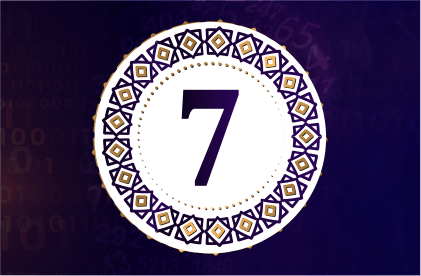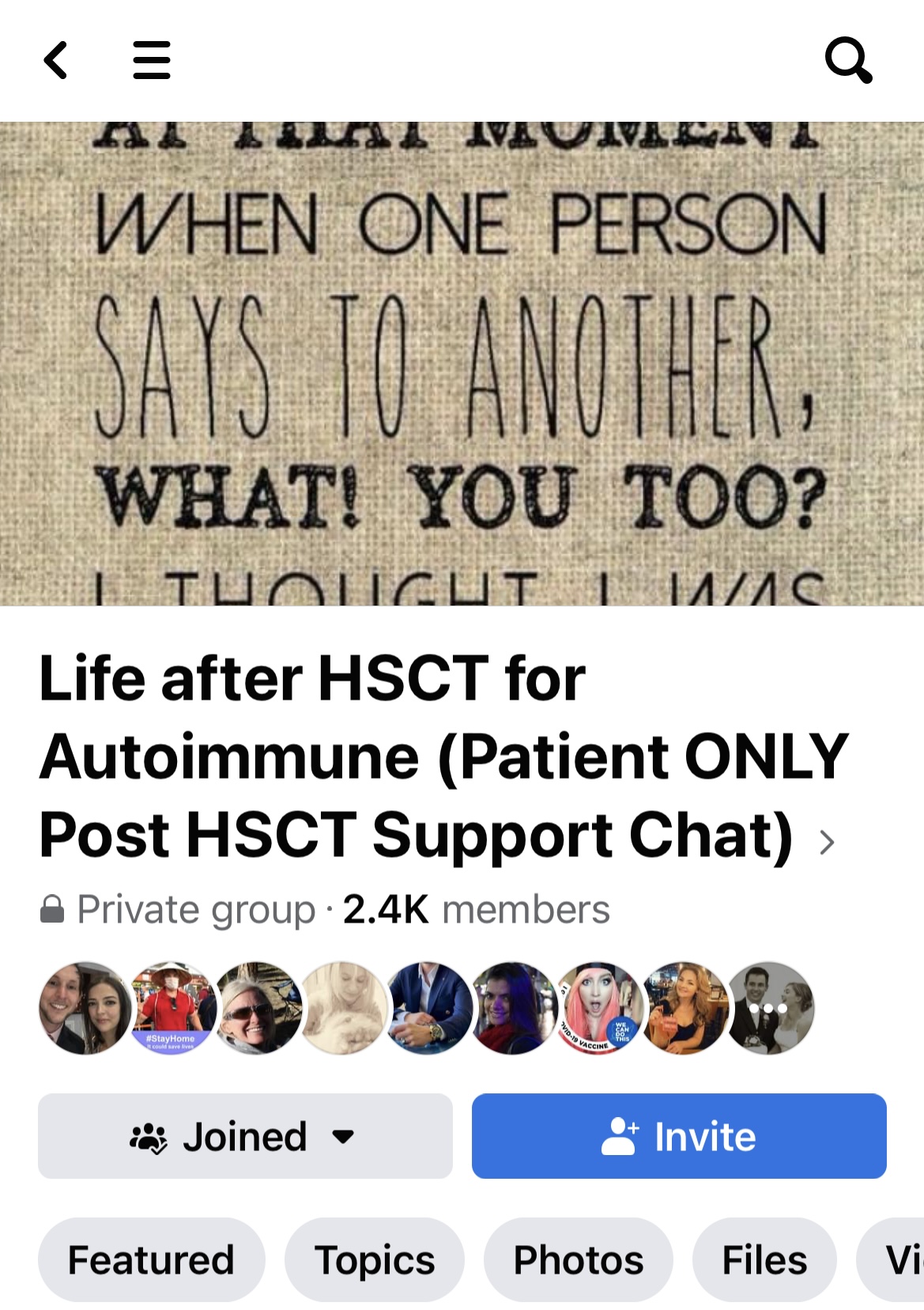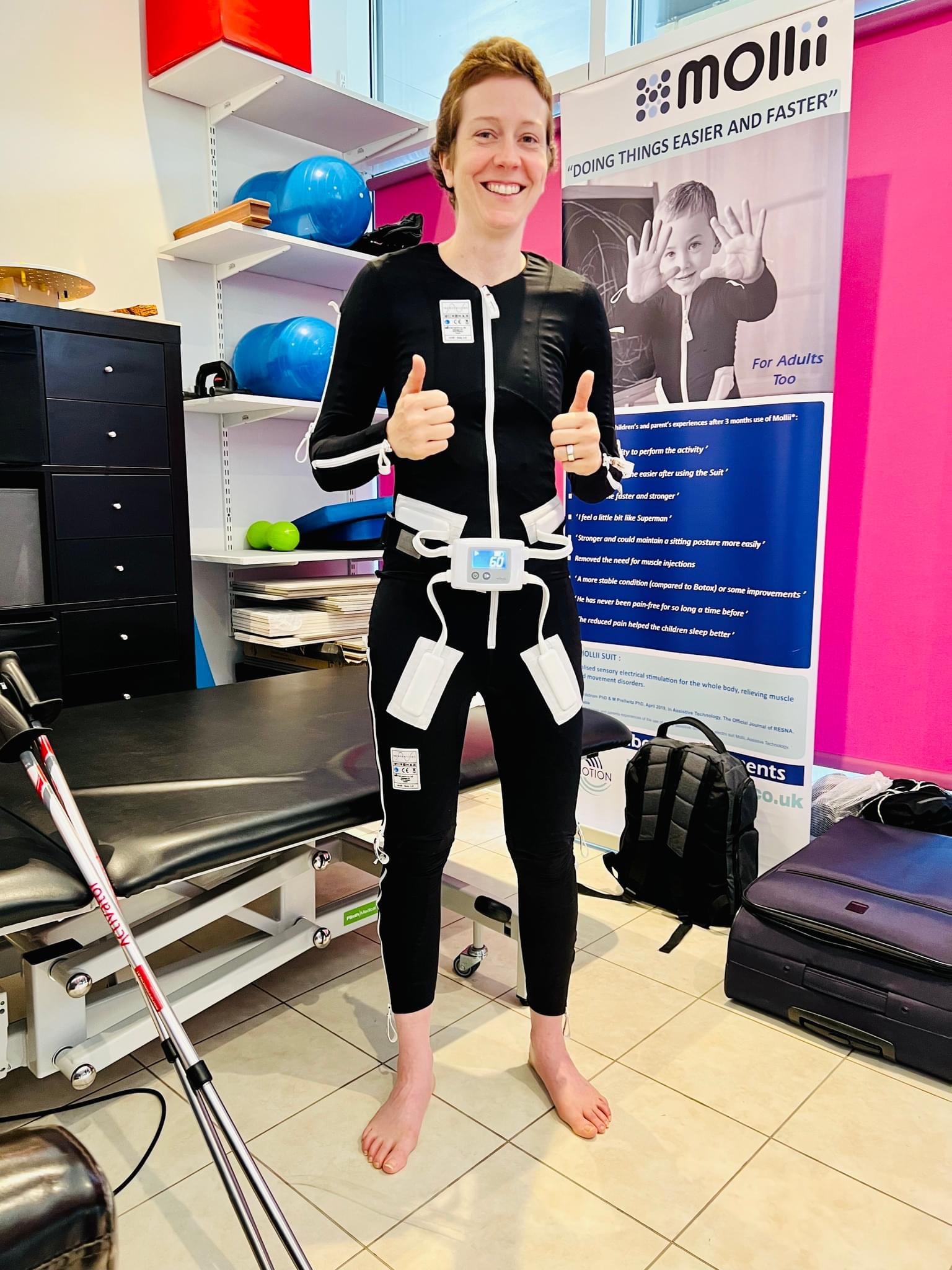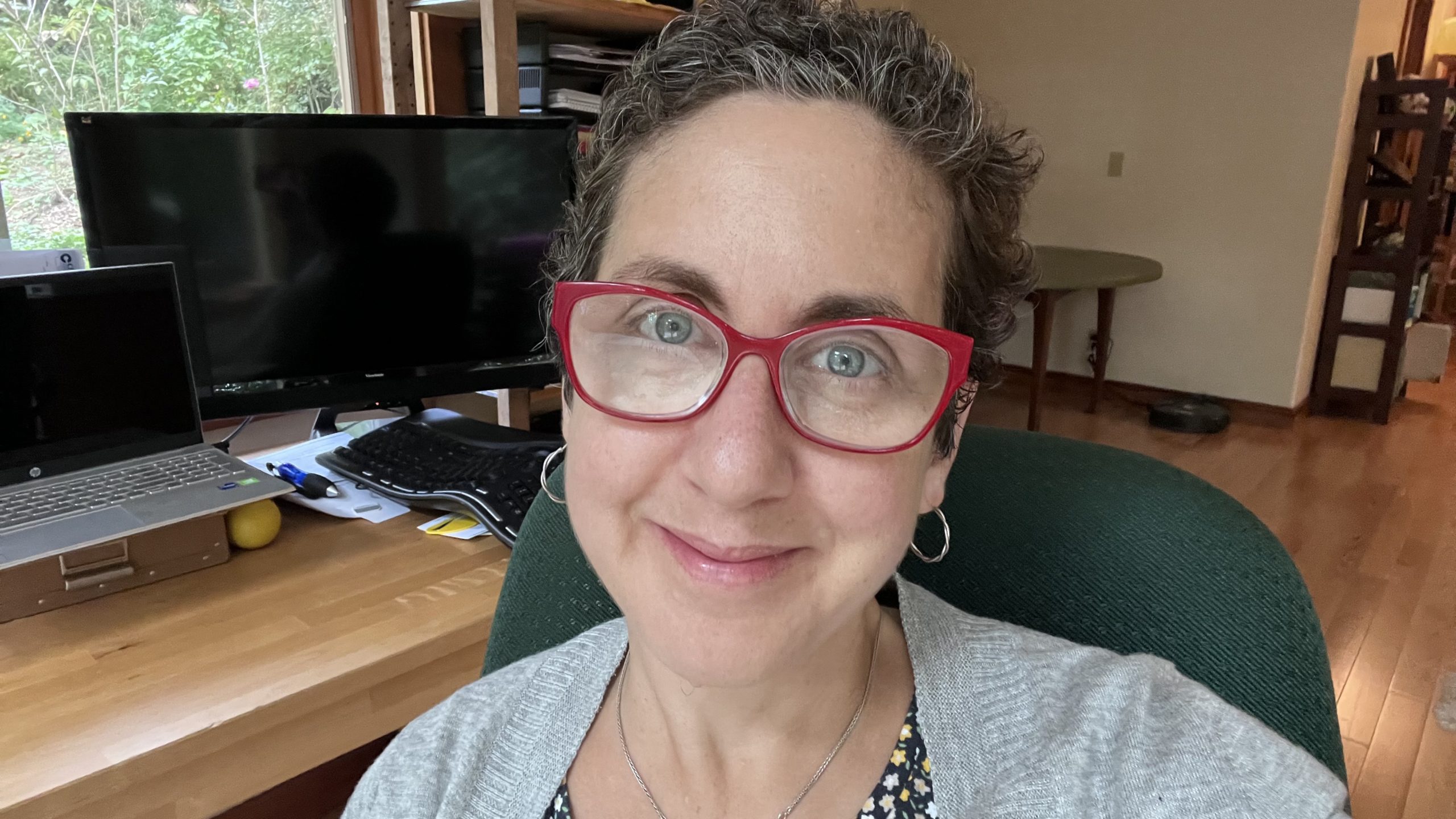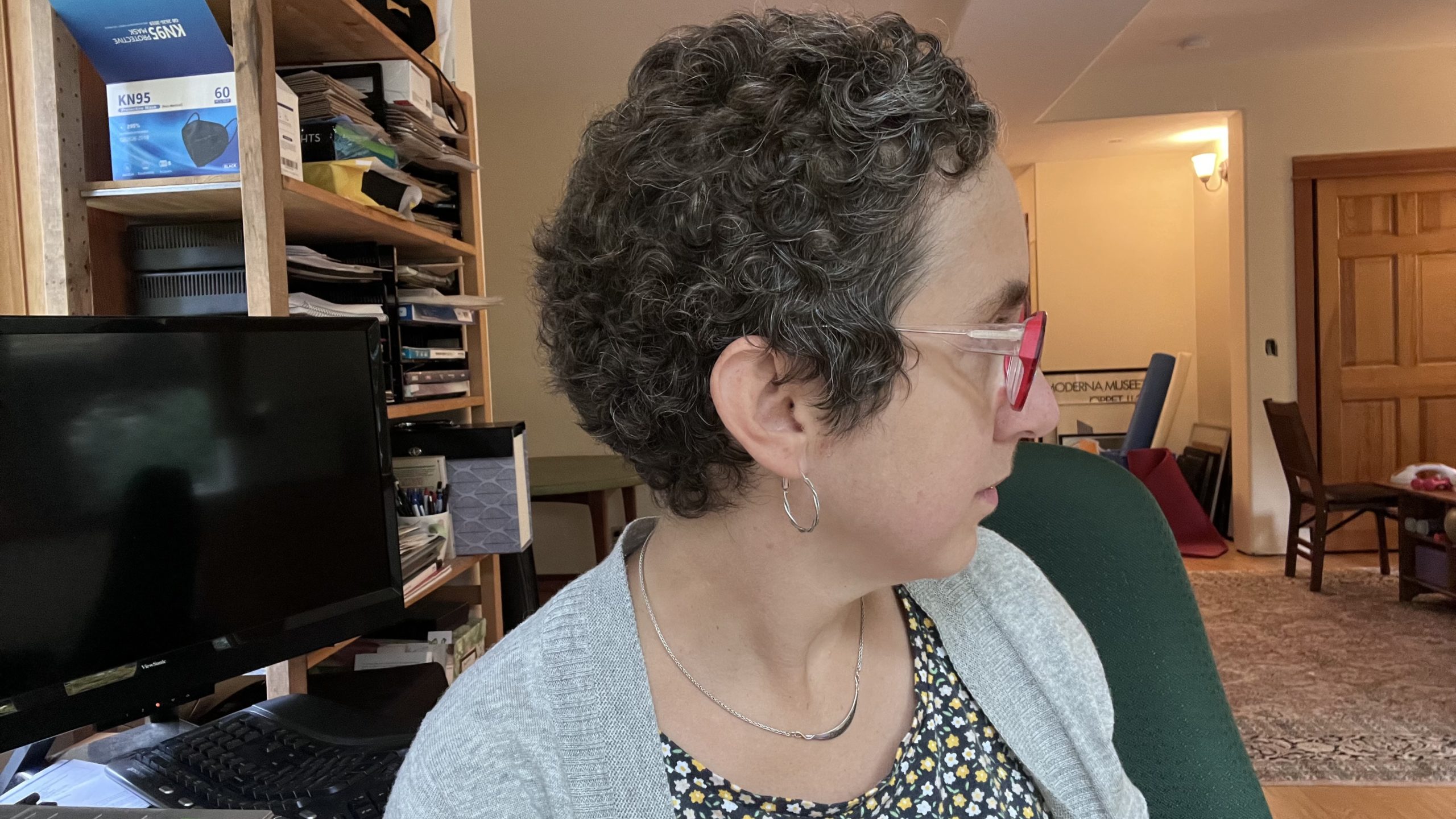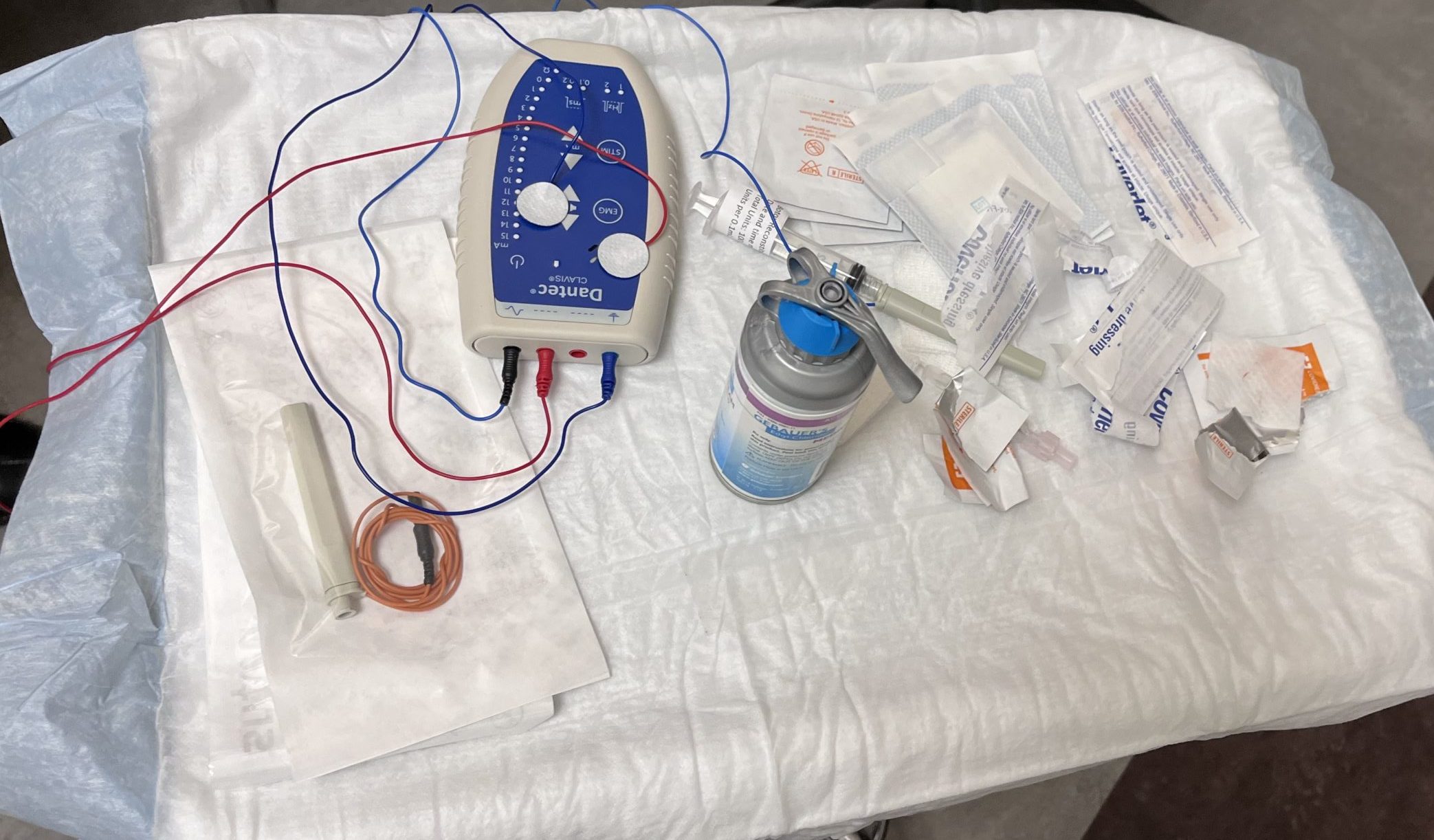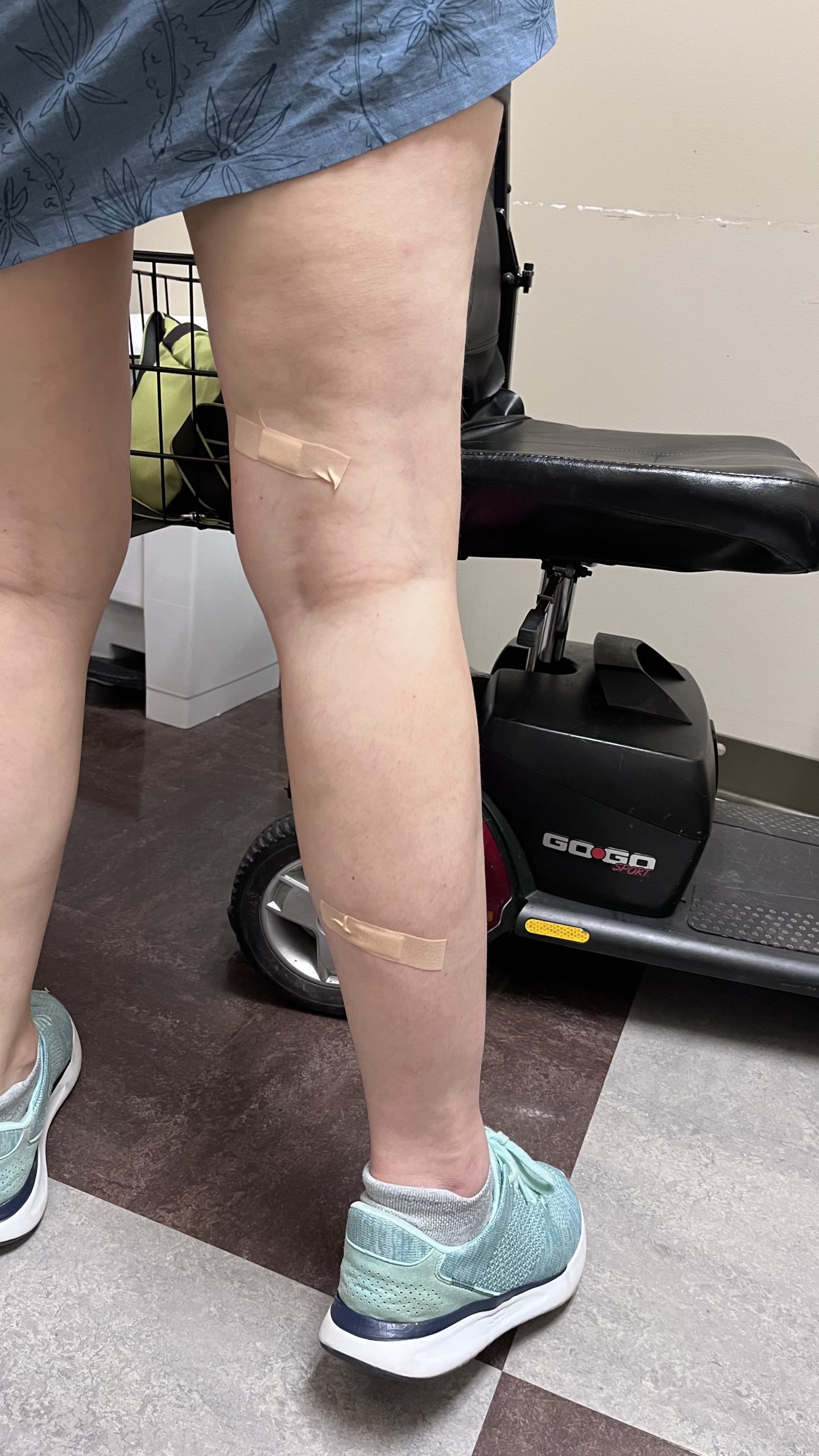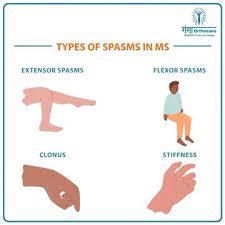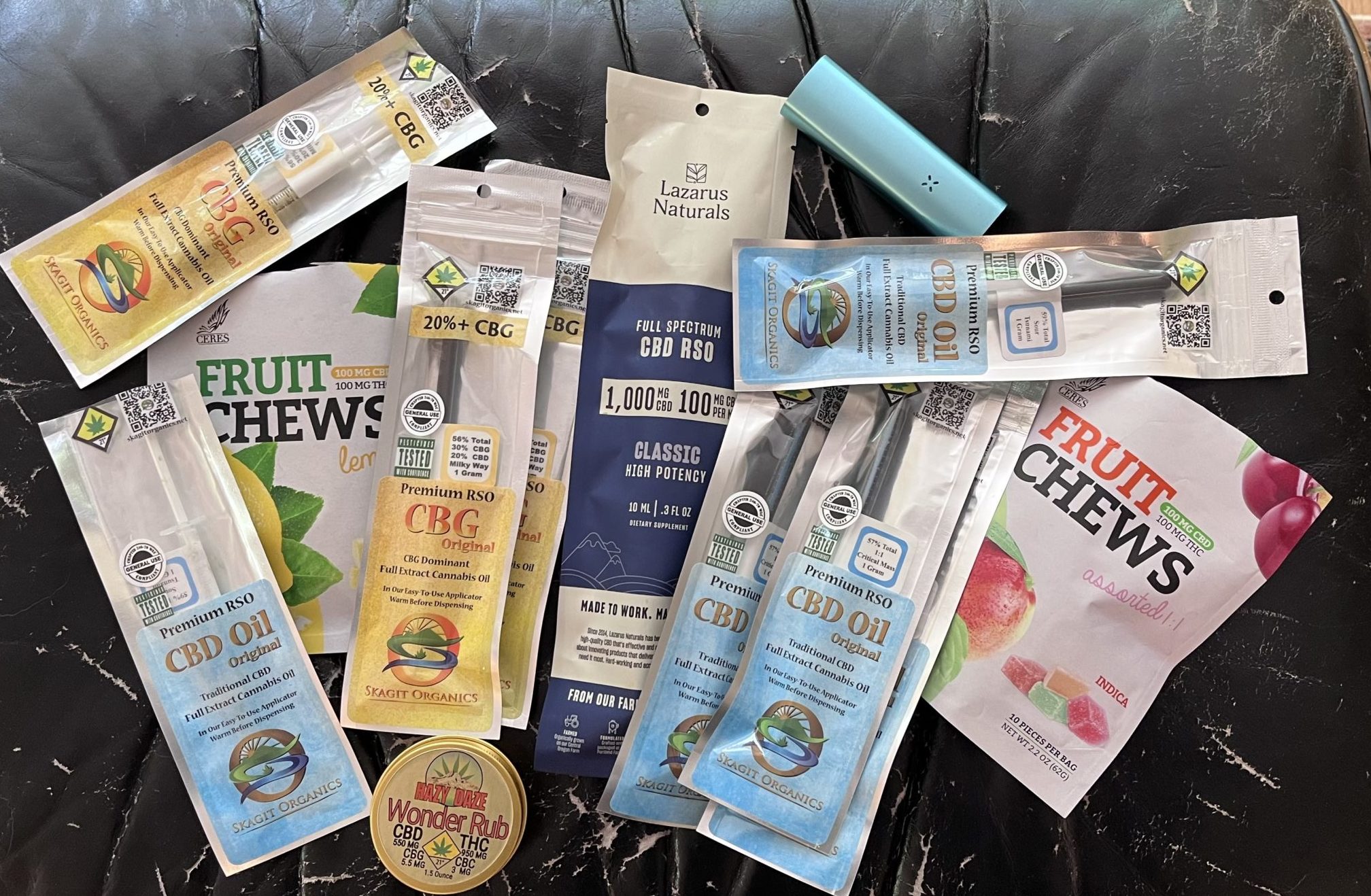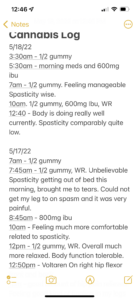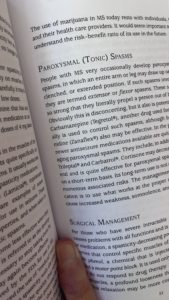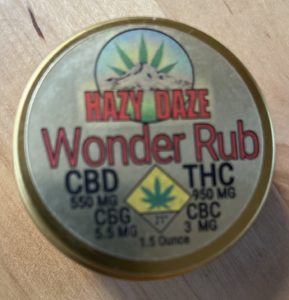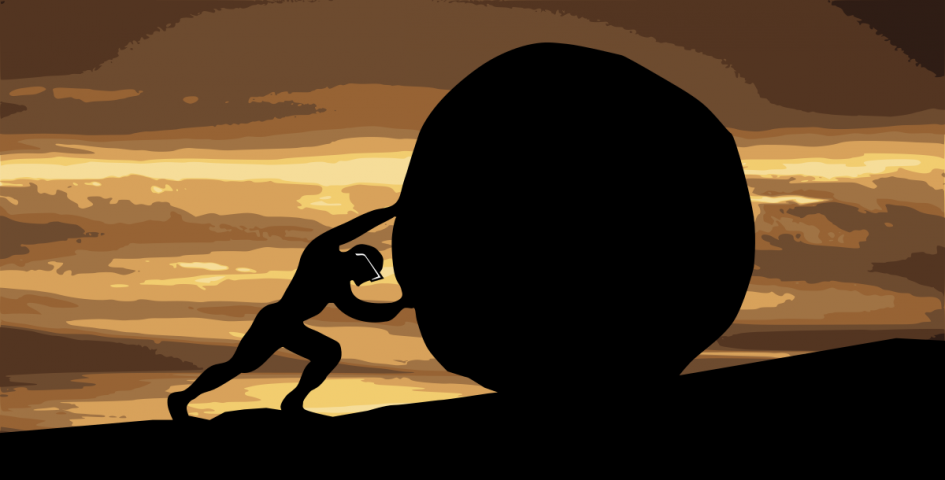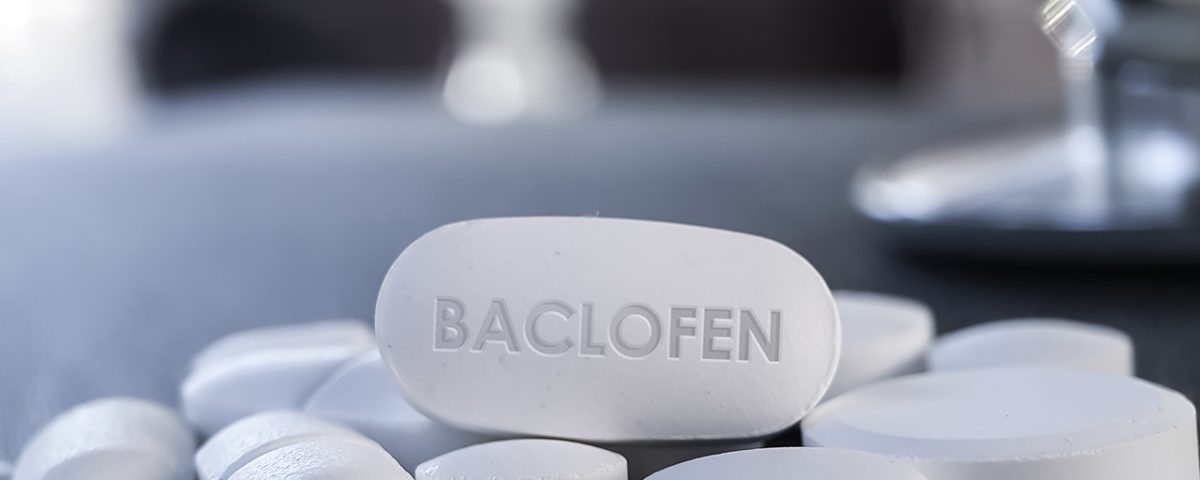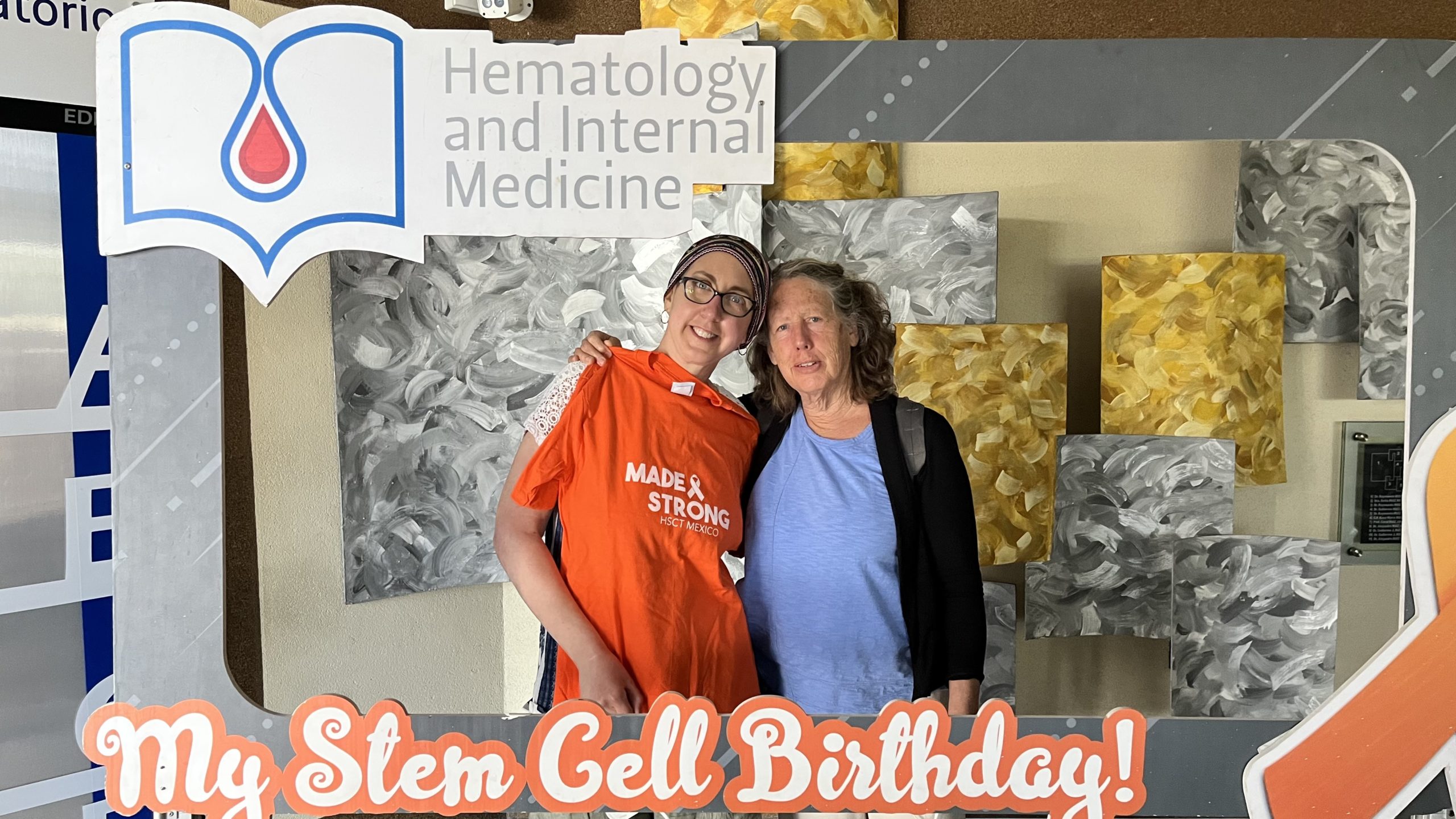 Today is the one-year anniversary of the birth of my new immune system, the day they put my stem cells back in my body to begin the process of rebuilding an infrastructure free of the memory of MS, hopefully. So, I thought I better get my butt in gear and write!
Today is the one-year anniversary of the birth of my new immune system, the day they put my stem cells back in my body to begin the process of rebuilding an infrastructure free of the memory of MS, hopefully. So, I thought I better get my butt in gear and write!
February 14, 2022 (a new meaning to Valentine’s Day) was the day they reintroduced my stem cells. February 14, 2023, my 1-year “stemmie birthday´. Also the day Kira and Zac leave on a three month trip to Southeast Asia. Grand adventures on both counts!
I also want to say a big and beautiful “happy birthday” to Kira who turned 24 on February 8th.
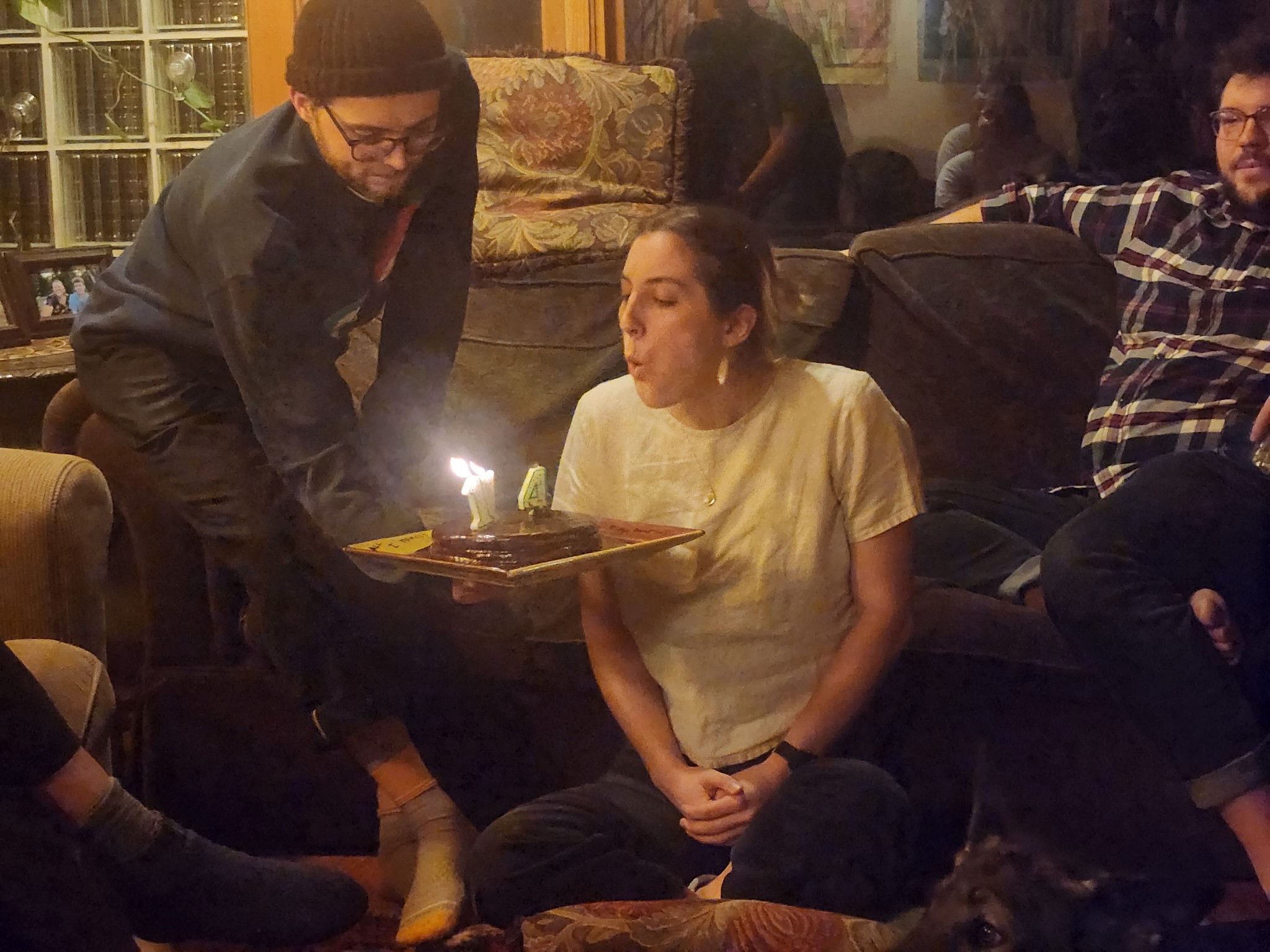
This post is playing catch up, so it is a long one…
Month 10
Ditto Month 9 – it sucked.
Month 11
The summer I turned 16, my grandmother took me on a three-week trip to France. We boarded a plane leaving from Seattle and landed at Charles de Gaulle airport in Paris and while the Airport was majestic, the surrounding part of the city was grittier than I expected Europe to look. I remember being nervous that Europe, and Paris in particular, had been overhyped. As we arrived in Paris proper, the majestic was restored many times over.
We spent a packed and beautiful week in Paris where we met up with my uncle Rob – a seasoned expat who spoke fluent French. Together, they took me to a sweet little restaurant, Au Franc Pinot on Île de la Cité, to celebrate my 16th birthday. To get to our table we had to walk down three flights of stairs underground. My memory tells me the walls were earthen – moving and alive – with carved out shelves for candles. As we descended deeper and deeper into the underground bowels of Paris, I expected our waiter to be otherworldly or at least suspect. That dinner was the first time I tasted (or had even heard of) foie gras – which I enjoyed tremendously and chased down with my first Kir Royale.
The morning after my birthday dinner, my grandmother got up early, before I woke, and bought a watercolor painting from a street vendor. It depicted the exact corner with the restaurant where we had celebrated my birthday. I carefully carried that painting through the rest of our trip. I have brought it with me every place I have lived since – Eugene, Boston, New York, Seattle, and now here to Indianola.
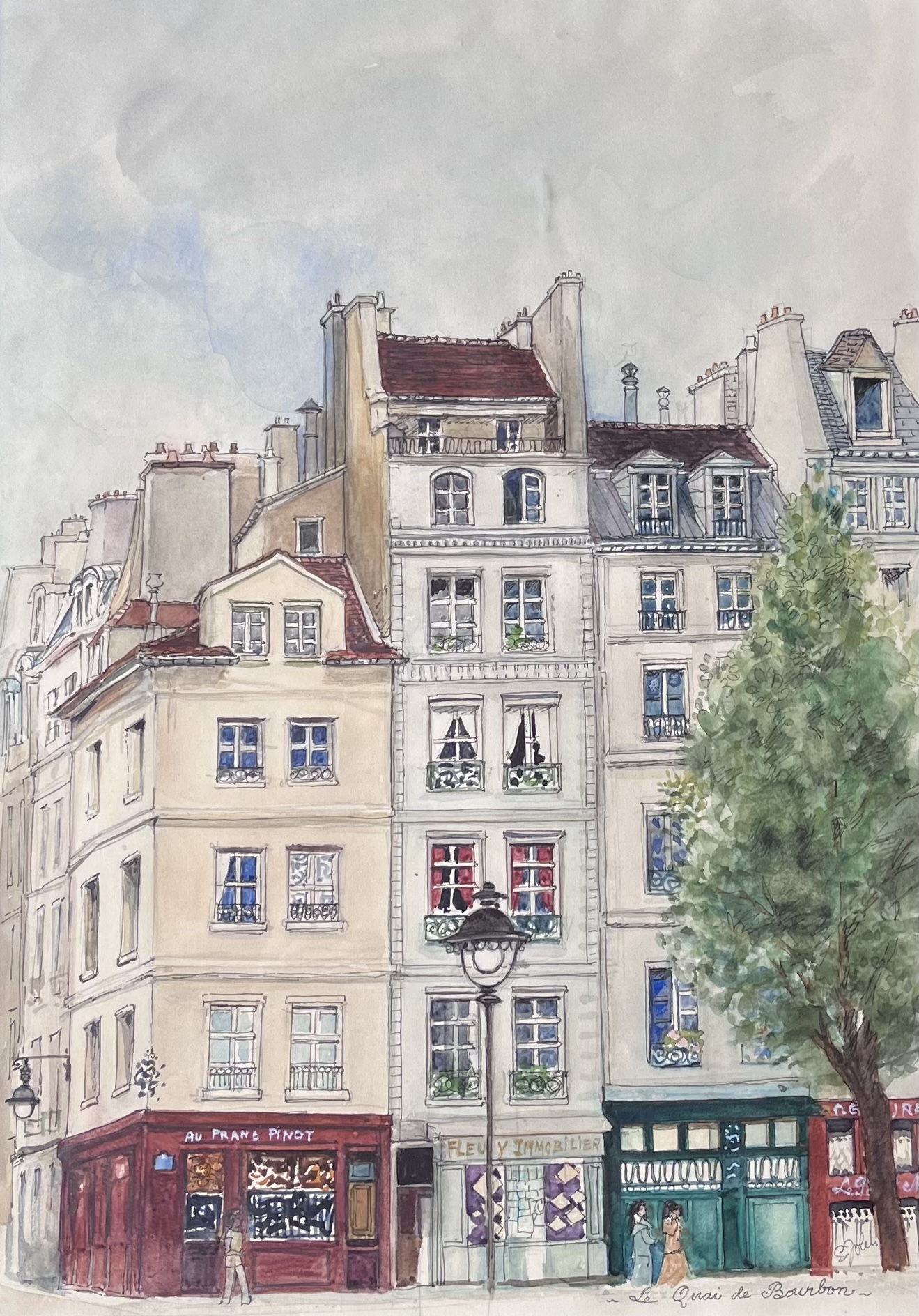
I fell in love with Monet on that trip. We had bags of flour thrown on us from a bridge over the Seine while we rode a Bateaux Mouches. We stayed up late and walked the Paris streets, ate dinner at street cafés, toured museums including the Louvre where I was disappointed by the Mona Lisa – so small. Because we were in Europe, my grandmother didn’t care that I was under 21 and I had wine, beer, and champagne freely.

We drove through Arles, Avignon, and St. Tropez where we shopped, ate, and explored. With the help of my uncle, we enjoyed a week on a barge through the burgundy region of France – Dijon to Beaune. I was closer, by far, to the age of the crew than I was to the other guests, but it was magical. We took a horseback ride, toured chateaus, ate the most amazing food, and tried without success to take a hot air balloon ride – the weather conditions were sadly never right.
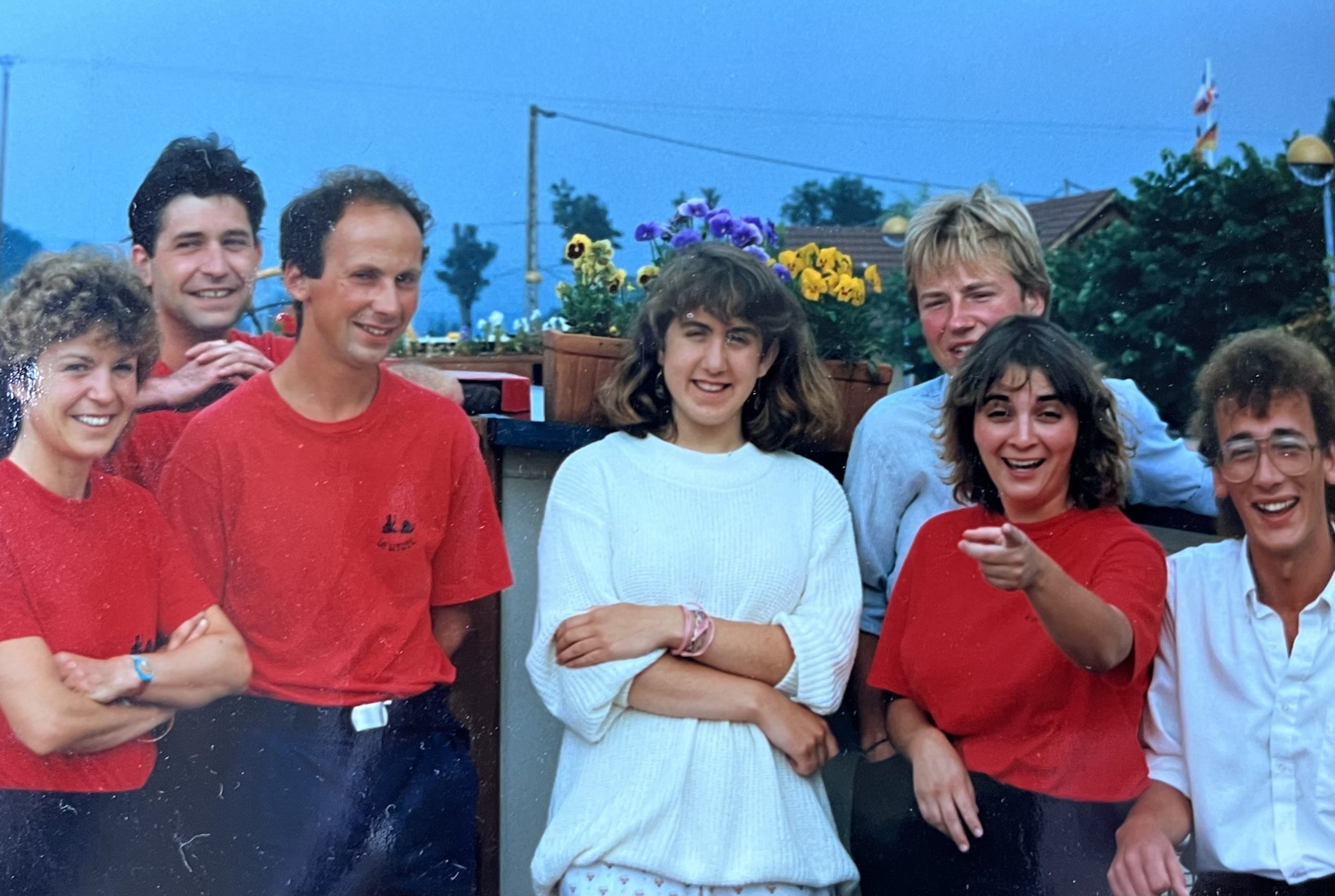

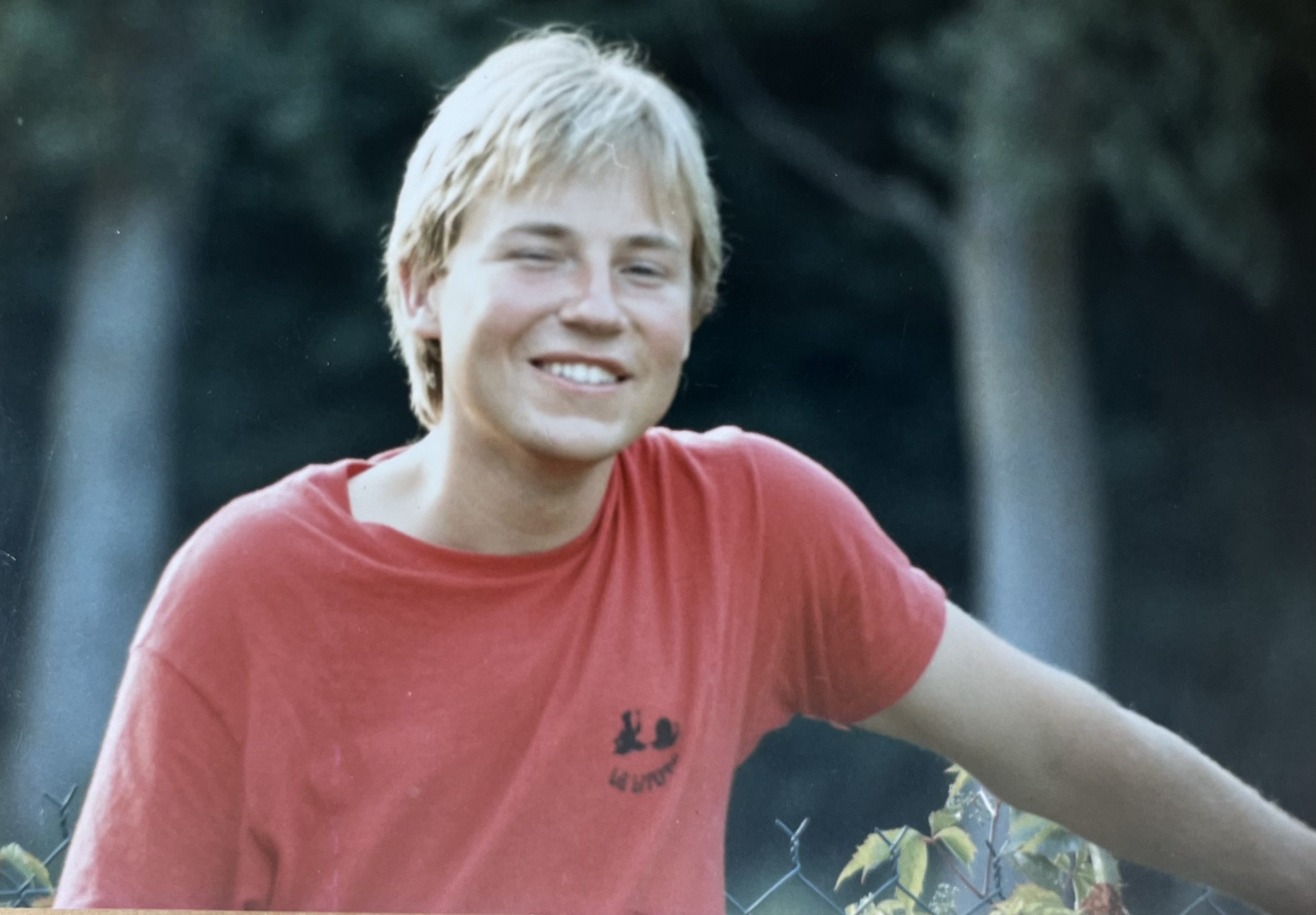
At the end of that boat tour we visited a wine cellar, Marche Aux Vins – a multi-floored cavern with candle sconces on the walls and rows and rows of oak barrels. We were not skilled at the spitting part of wine tasting, which was probably their plan all along, and were more than tipsy by the time we reached the “purchasing room”. My grandmother bought multiple crates of wine to be shipped home and I bought a couple of bottles to take home with my teenage self.
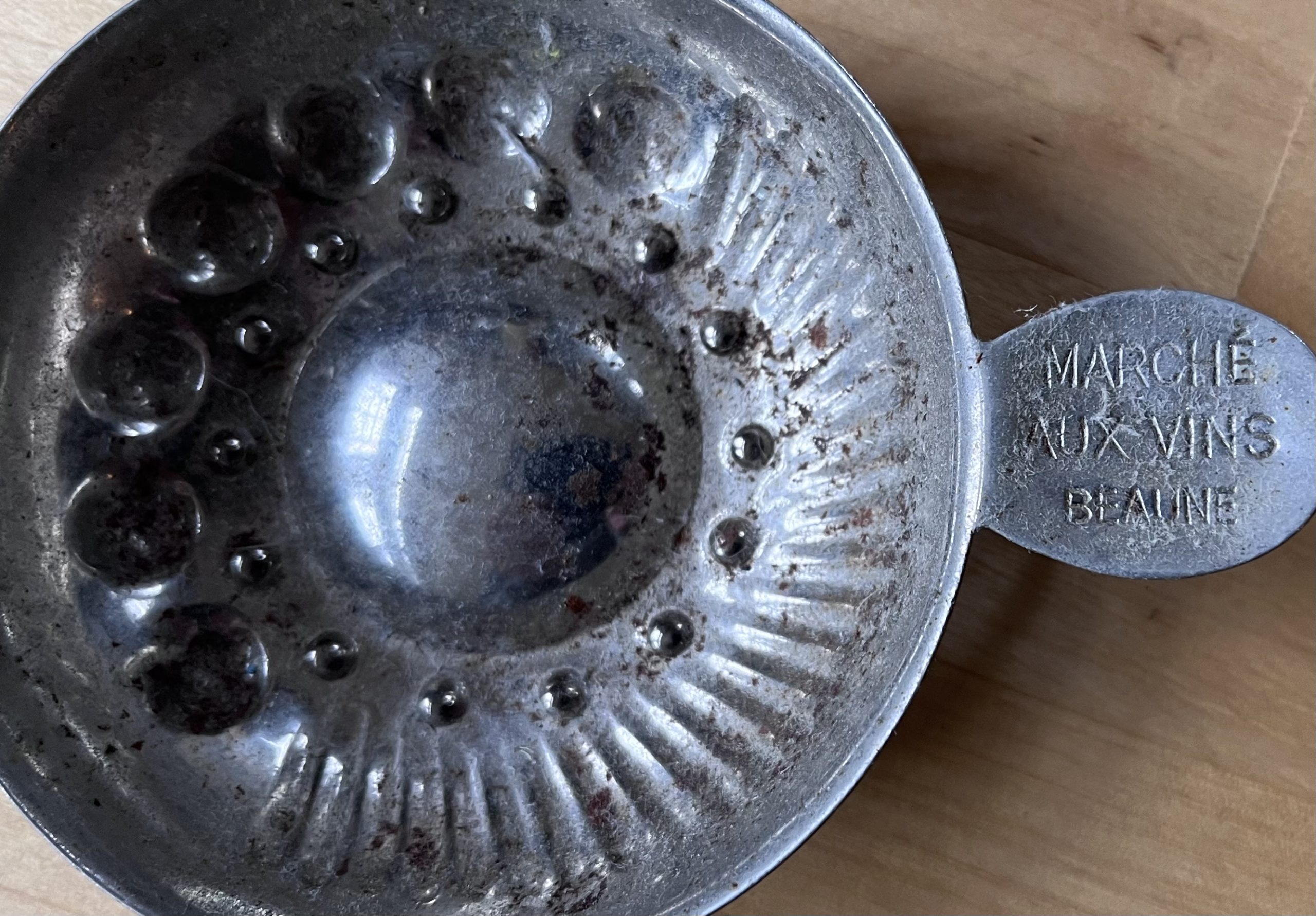
I share this now because my grandmother passed on Dec 12 at age 96. She was surrounded by family – her daughter and son In-law, two of her grandchildren and their spouses, and a squirrel’s nest of great grandchildren. She was ready and her passing was without pain.
The memories of that trip to France are vivid for me and I know they were vivid for her. Over the years and decades since then, we talked about them often. In October of this year when I visited her, almost 40 years since the trip, we still talked about it as if it was yesterday.
Last night as I was walking downstairs I looked at photographs of her that hang on our stairwell wall and it hit me that I’m the only one who still holds those memories. My co-author of those stories is no longer here. They only live inside me now and I miss her. It reminded me of what she said when my grandfather passed, at his memorial. She shared that the thing she missed most was having a person in her life who knew all the stories. The stories of their marriage, good and bad, the stories of raising their children, the stories of their travels, of their friends, the houses they’d lived in, the meals they’d shared, the decisions they’d made — the minutiae of life. I get that now.
This morning is the misty gray that comes with living in the Pacific Northwest near the ocean. It is quiet, my house is empty. I will offer this cliché… It’s been a long time since my last blog post. I skipped right over a month 10 and find myself now at month 11.
Between my last post and now it has been rough. My spasticity was so intense that I was in bed a lot, not really functioning. It was a dark time which I recognize now correlates, somewhat symbolically, with the darkest days of the year and the stress of the holidays. I lost all interest in writing.
Over the past few weeks, it seems that medication management is starting to work. I feel connected again to the world. I can dream about the future, do physical therapy to get stronger, comfortably participate in social activities. I can sit at the table and play games.
I am not sure what exactly is different. I have tried these medication combinations before with little effect, but now they seem to be making difference. Some days are still rough – two days ago I was in bed all day – some days I feel relatively effortless. Most days are in between.
I have been able to start my day feeling that I can move things forward; that I can contribute. I have more capacity to participate. I am taking on volunteer opportunities in my community and connecting more with friends for conversations and catching up, I feel like I’ve lost time with people.
As I close in on the one-year mark I’m having difficulty wrapping my head around the fact that that much time has passed. In a few days it will be a year since I stepped on the plane to Mexico. Am I better? Did HSCT work for me? More on this at the actual one-year post…
Month 12 – 1 year
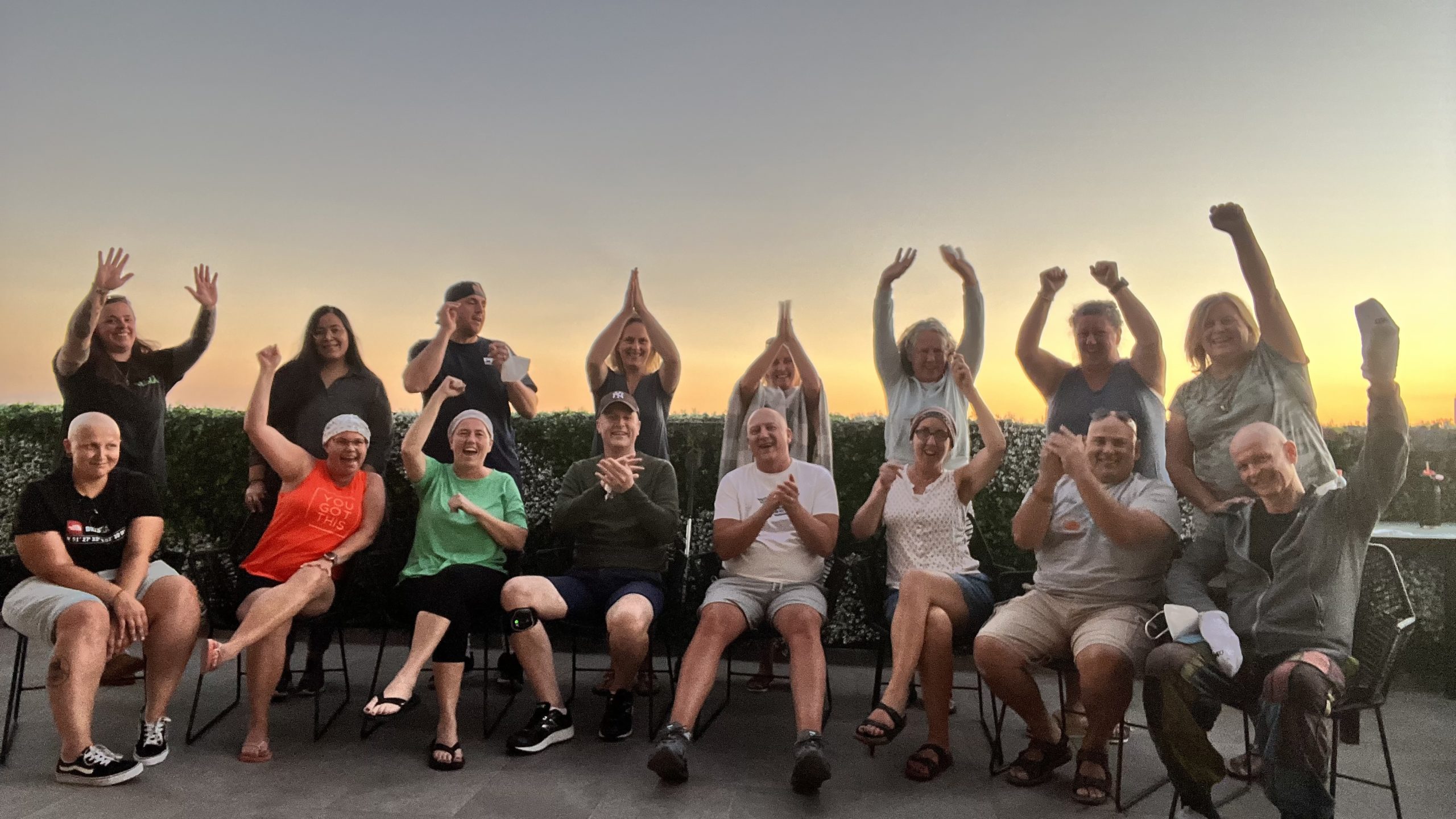
Where am I at the one-year mark? Cautiously hopeful. Still in pain but working on it. Still experiencing loads of spasticity but working on it. I would say I’m in the middle of things. I’m on the upward arc from the nadir, I’ve seen the darker parts and I feel they are behind me. Am I back to my baseline? Not yet. Only because my spasticity is still higher and different than before treatment. If that were to go away, I’d be back to baseline or better. My bladder is better, my fatigue is better when I’m not medicated to high heaven. My mood is balanced. Some days are still hard, but those days are fewer. More days are good.
I’m feeling optimistic. I have this sense that there is a strong, fluid moving skeleton underneath a façade of spasticity, waiting to emerge. I feel strong inside. In those rare moments where my spasticity eases, that strong understructure comes forward and makes itself known enough that I can trust it’s there. I feel stronger and more centered than I did in the dark of winter.
I continue to turn over all stones of therapies, modalities, and medications. Under one stone, I found that Swedish Medical Center, here in Seattle, offers a free music therapy zoom group every Wednesday morning. What a fun discovery! It is both meditation and movement therapy – using music in connection with movement and emotional exploration. It connects the mind and the body in a way that makes sense to me. It is both science and heart.
Am I done? Not yet. Am I hopeful? Mostly. Do I regret treatment? Not yet. I think if this spasticity does not relent I might wonder if I did the right thing, but it is still early for that. I don’t think I will regret this even if that doesn’t happen. There’s no way to know if the spasticity wouldn’t have happened anyway. Also, if I hadn’t tried HSCT I would’ve always wondered. And since there are no other options, the risk wasn’t really that great.
I’m feeling at peace. I am starting to have more in my life than just my MS, though it does still take up time and thinking. It will continue to be my “job” for the rest of my life most likely.
So, what am I doing? Learning to use Spotify and Photoshop, volunteering with my local community, reading, loads of physical therapy, counseling, music therapy, writing, spending time with my family, supporting my smaller circle of my intentional community (wise acres), making granola and yogurt – I’m staying busy.
I feel on the cusp of something, some internal revelation maybe, some sort of quantum leap. I’m open. We shall see what the next year holds. Happy one year “birthday” to me. If you are still here, thank you for reading along.
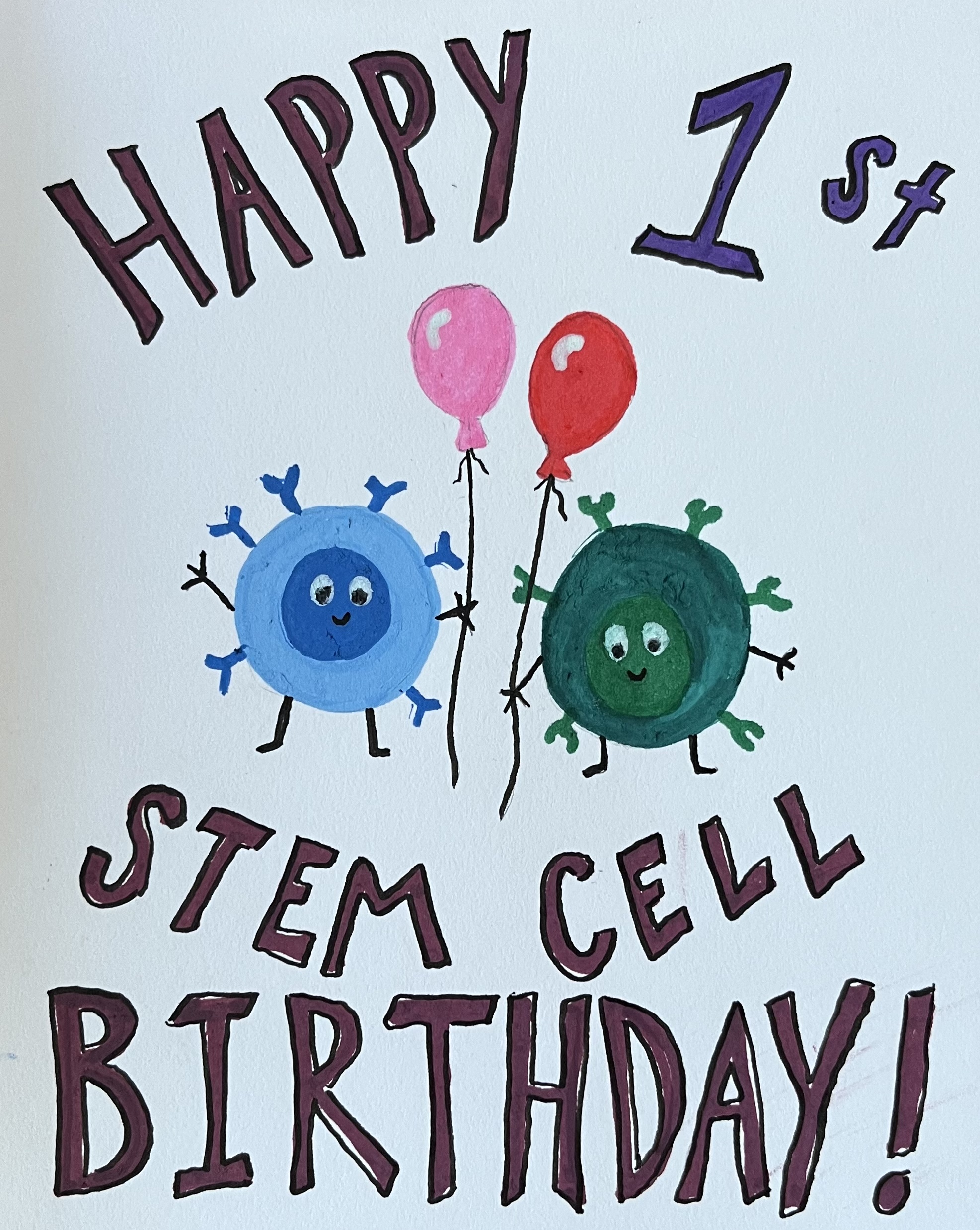
Symptom Update
Walking/legs/spasticity:
This has been my focus since the start of recovery. I’ve mostly covered this above. It is still rough, still very much present, but significantly more managed than before. I am motivated and energized to do physical work every day. Over the last few months, it has been difficult-to-impossible to do simple exercises, even though I was motivated to do so. Now I get to be creative, enjoy my body more, I get to build. That ability to build gives me hope. I am willing to do the hard work that needs doing if I know things are moving forward. Working with my Physician, I am planning to attempt Botox again on my leg to see if we can impact the correct muscles this time.
Arm/hand:
I have slowly begun to do work here after ignoring it for such a long time, this work is hard – the hardest of all the work I do. I am using a contraption (Saebo Reach), prescribed to me by my occupational therapist (OT) years ago. It was designed for stroke survivors to reduce their arm spasticity and regain function through neuroplasticity. I recently started using another product from Saebo – the Estim Micro, that I wear at night along with the Saebo Stretch the I have had for years. These therapies are not a quick fix. They are awkward and cumbersome, but a trust that over time and with a ton of committed intention, my arm and hand can improve.
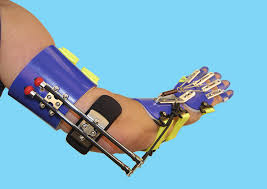
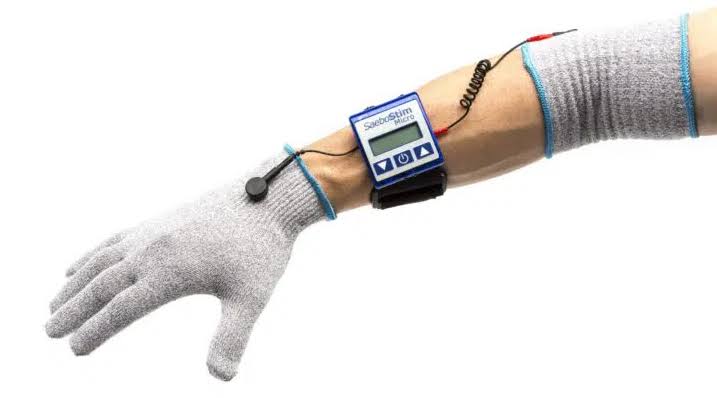
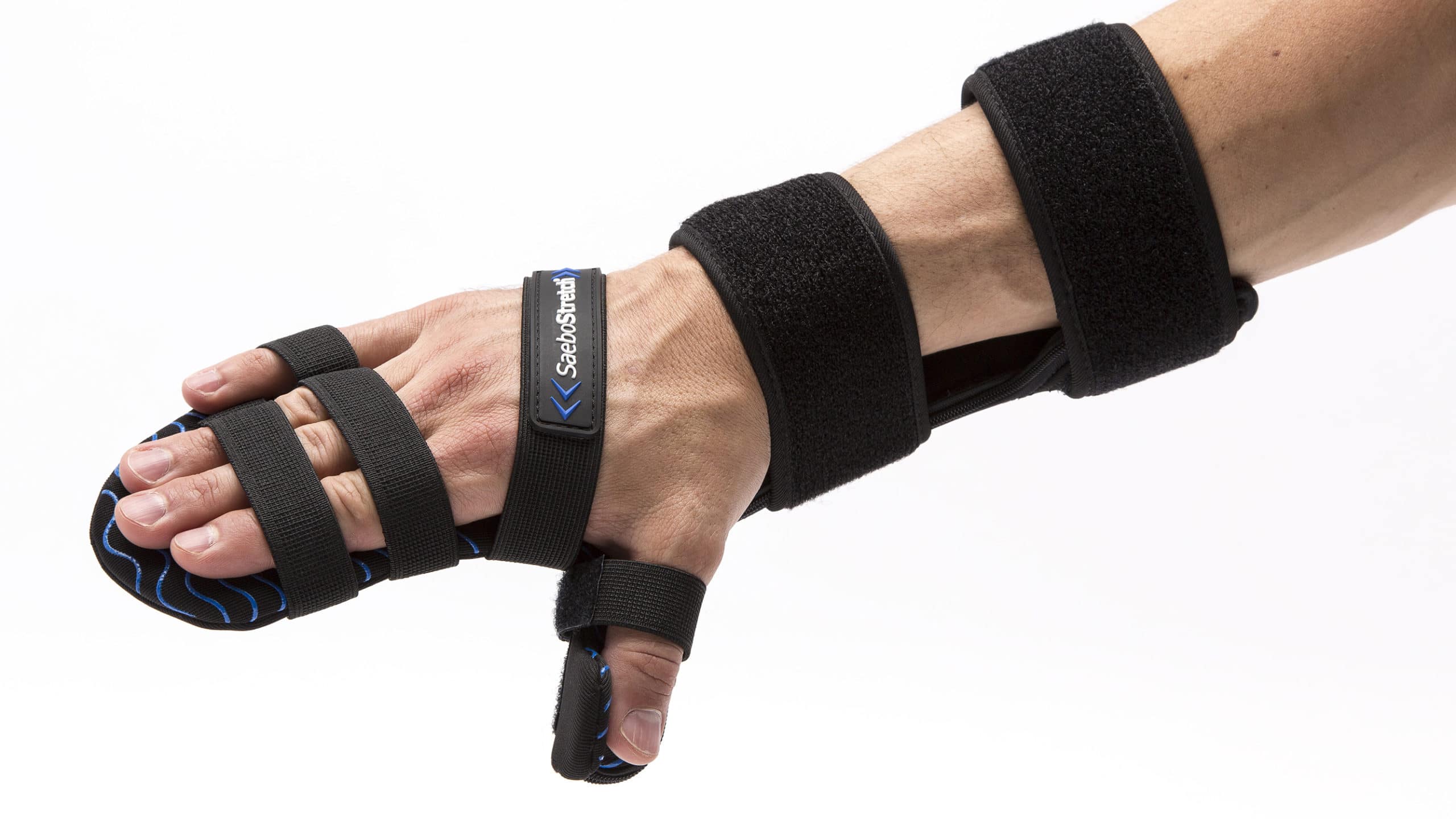
Bladder:
My bladder function continues to be mostly normal, thankfully. I can live like this forever, even if it isn’t perfect.
Bowel:
Trigger warning: skip to the next section if you are squeamish about scatological things.
By and large, my bowel function is normal. Regular, constipation managed, not too loose, in the sweet spot. However, I recently had an episode that many people with MS will relate to. I had been increasing my magnesium dose to see what my body could tolerate – this can lead to loose stool. I drove to a medical appointment, got out of my car, and preceded to unload my walker to assist me getting into the building. As I am bent over to lift the walker, I felt a sudden bowel movement urgency and simultaneously felt that my anal sphincter was unable to hold in the impending poop. It just slipped out into my underpants. Thankfully, I am perpetually early to appointments. I had time to clean up.
I entered the facility and went directly to the bathroom. I took off my shoes, pants, and then carefully took off my underwear. Thankfully it had been contained and my pants were spared. But oh, what a “shit show”! And, what a cleanup! Scads of toilet paper, hand towels, and huffing and puffing before I was “shit free”. I flushed the toilet paper, put the hand towels and my underwear in the garbage bag, removed the garbage bag from the container and tied it shut, put my pants and shoes back on, and went to check in. Embarrassing, humiliating.
I have had a small handful (thankfully) of moments like this over the last 15 years, but this was by far the worst. It reminded me that there is still some MS vulnerability in this area. Note to self, back off the magnesium.
Hair:
Still in the awkward grow out phase. My hair continues to grow up before it turns downward. Still curious and patient.

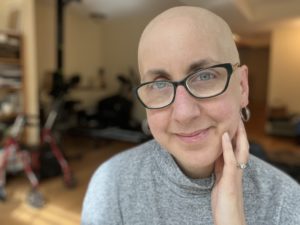
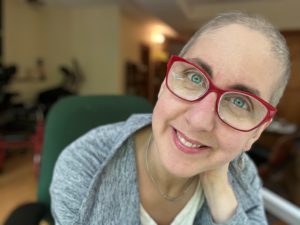
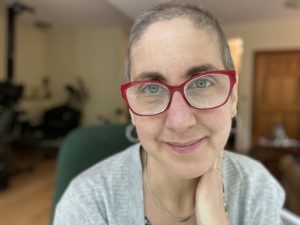
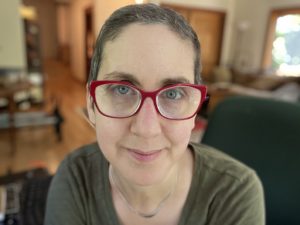
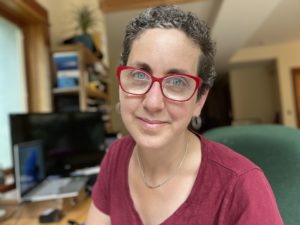
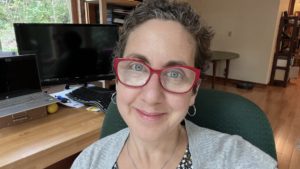
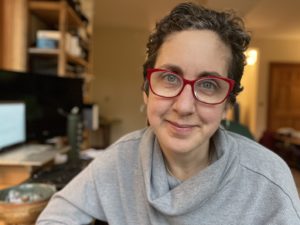

Fatigue:
While my MS fatigue continues to be at bay, the combination of medications that I am on have fatigue as a side effect, so we’re playing with different medications to find a combination with the least downsides.
Medications
I have a strong drive to be on as little medication as possible. I think it is a fear of polypharmacy, learned in graduate school. Too many medications = bad things. I reassure myself that my underlying cardiac health is strong, my kidneys are working well, my pulmonary system and liver are healthy. I don’t have an issue with blood sugar regulation. So maybe I’m less at risk than I think.
I don’t plan to rock the boat, even though it is my impulse to wean off medications that I don’t know concretely are working. Spasticity is there underneath the medication like the proverbial sleeping tiger. It could make itself known if provoked.
Current meditation cocktail:
Baclofen: Maximum dose – 20 mg, 4x/day.
Lyrica (Pregambalin): 150mg, 2x/day, 75mg 2x/day. This is a medication that can be used interchangeably with gabapentin. It is metabolized somewhat differently and is known to have a gentler side effect profile. I am two weeks into this, and the jury is still out as to whether or not my fatigue is better with this.
Tramadol: I have been down to 25 mg at night and one night I used none. That night I slept very poorly and had a rough day emotionally. Still sorting this out. I don’t like being on an opioid, but it makes a difference with sleep and weaning off, even at this very low dose, is impactful.
Duloxetine (Cymbalta): I have been on this for a little over two weeks at a moderate dose. This is an antidepressant that has been shown to have beneficial impacts on pain.
“Duloxetine is also used to treat pain and tingling caused by diabetic neuropathy (damage to nerves that can develop in people who have diabetes) in adults and fibromyalgia (a long-lasting condition that may cause pain, muscle stiffness and tenderness, tiredness, and difficulty falling asleep or staying asleep) in adults and children 13 years of age and older. It is also used to treat ongoing bone or muscle pain such as lower back pain or osteoarthritis (joint pain or stiffness that may worsen over time) in adults. Duloxetine is in a class of medications called selective serotonin and norepinephrine reuptake inhibitors (SNRIs). It works by increasing the amounts of serotonin and norepinephrine, natural substances in the brain that help maintain mental balance and stop the movement of pain signals in the brain.” Source: https://medlineplus.gov/druginfo/meds/a604030.html
The idea here is that it can increase my pain threshold, so I am less triggered by pain as a source of my spasticity. It may replace Tramadol to help me sleep the night, and, as a side bonus, it may give me an overall sense of well-being. I am interested to see if this might be beneficial. Not noticing anything yet as relates to decrease pain, but I do believe it may be having a negative impact on fatigue during the day as well as some blurry vision
Cannibis: I am currently only doing this at night to help me sleep. During the day it is inconsistent and its benefit to spasticity and consistent in making me feel high, so I don’t use it very often.
